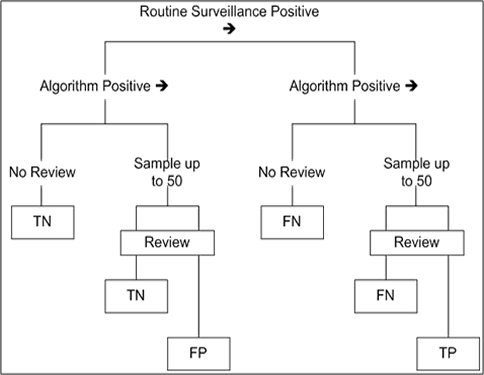Exhibit 14*

* Relative to routine surveillance, as the reference standard.
TP = true positive;, TN = true negative; FP = false positive; FN = false negative.
Text Description
This Exhibit diagrams how applying an algorithm, developed using a part of the data set, after routine surveillance (considered the "gold standard") allows classification of true positive and negative results (and false positive or negative results) in identifying patients with or without surgical site infection (SSI). At the top of the figure, routine surveillance results in a set of surveillance-positive and surveillance-negative cases. Cases that are surveillance-positive and algorithm-negative are considered false negatives and not examined further; of cases that are surveillance-positive and algorithm-positive, up to 50 are selected at random to be reviewed by an infection control specialist (ICS), resulting in true positives and false negatives for SSI. Similar analysis is done for surveillance-negative cases: those that are surveillance-negative and algorithm-negative are classed as true negatives for SSI; of cases that are surveillance-negative and algorithm-positive, up to 50 are selected at random for review by an ICS, resulting in true negatives and false positives for SSI.



